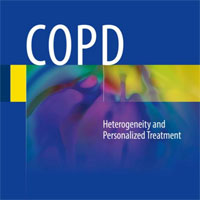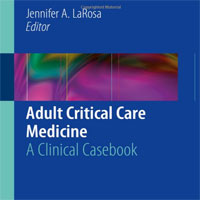Stories Category: Intensive Care
Half of Sepsis Patients Face Death Within Two Years
Half of all patients with sepsis admitted to an emergency medical department died within two years, according to Danish researchers investigating factors that could predict outcomes for these patients. Dr. Finn E. Nielsen,... read more
Predictive Value of Diaphragm and Lung Ultrasonography for Weaning Failure in Critically Ill Patients with ARF Due to COVID-19 Pneumonia
Patients undergoing mechanical ventilation due to respiratory failure require a comprehensive approach to determine the optimal timing for weaning from ventilatory support. Evaluating respiratory mechanics, maximal muscle... read more
Sleep Disturbances Impact on Outcomes in ICU
Complete disappearance of rapid eye movement (REM) sleep was frequently observed in ICUs (50% of patients) and may occur at all times during the ICU stay, as well as in patients breathing spontaneously, after admission or... read more

Management of Severe Traumatic Brain Injury
"Management of Severe Traumatic Brain Injury" is a practical, comprehensive guide to the treatment of patients (both adults and children) with such injuries, from the time of initial contact through to the rehabilitation... read more
Early Deep-to-light vs. Continuous Light Sedation for ICU Patients with Mechanical Ventilation
Compared to the continuous light sedation, early deep-to-light sedation strategy was associated with improved patient outcomes, and continuous deep sedation was confirmed with poorer patient outcomes. In total, 6700 patients... read more
Assessment of Respiratory Muscles, Lung Parenchyma, and Cardiac Function by Ultrasound for Predicting Weaning Failure in Critically Ill Adults
Parasternal intercostal muscle thickening fraction (PMTF) has good discriminatory power to predict weaning outcomes (area under the receiver operating characteristic curve: 0.74 [0.59–0.88]). Pre-SBT PMTF had similar power... read more

COPD: Heterogeneity and Personalized Treatment
This book explains how analysis of the heterogeneity of chronic obstructive pulmonary disease (COPD) enhances understanding of the condition and leads to improved, personalized treatment. State of the art knowledge is presented... read more
Plasma Bioactive Adrenomedullin Predicts Mortality and Need for Dialysis in Critical COVID-19
In this study, serial bio-ADM samples in the ICU had limited predictive power for mortality in critically ill COVID-19 patients when looking at absolute values. Still, relative changes over time showed a much better prediction.... read more
VAP Prevention in the ICU
Critically ill patients admitted to an intensive care unit for a life-threatening condition (both medical and surgical) can contract a ventilator-associated pneumonia (VAP). This is an infection acquired by virtue of... read more
Aspirin Reduces the Need for Mechanical Ventilation by Nearly Half For COVID-19 Patients
Patients hospitalized with COVID-19 and taking aspirin were nearly half as likely to require mechanical ventilation as those with COVID-19 not taking the drug, according to a study of adult patients. The patients were... read more
Association Between Comorbid COPD and Prognosis of Patients Admitted to ICU for Non-COPD Reasons
Comorbid COPD increased the risk of 28-day mortality among patients admitted to the ICU for non-COPD reasons, especially for those admitted to the cardiac surgery recovery unit. A retrospective cohort study was performed... read more

Adult Critical Care Medicine
This clinical casebook provides a comprehensive yet concise state-of-the-art review of adult critical care medicine. Presented in a case-based format, each case focuses on a scenario commonly encountered with an adult patient... read more
Risk Factors for Traumatic Intracranial Hemorrhage in Mild TBI Patients
The findings from this study provide additional context to risk factors currently in use as components in guidelines for the management of mild traumatic brain injury (mTBI) in the ED setting, contrasting high risk predictors... read more

Trauma Team Dynamics: A Trauma Crisis Resource Management Manual
This is the first book exploring the unique dynamics created by a multidisciplinary trauma team and how crisis management strategies can improve teamwork and communication and, potentially, improve patient resuscitation... read more
Influenza-Complicated Thromboembolism in the ICU
Influenza-complicated thromboembolism (TE) among patients with severe influenza infection in the intensive care unit (ICU) is associated with increased risk for longer- duration mechanical ventilation, longer ICU stays, and... read more
Reducing Deep Sedation and Benzodiazepine Use in Mechanically Ventilated Patients During Critical Care Transport
The rate of deep sedation in this cohort was consistent with previously published data; however, it remains higher than clinically indicated. Over the course of the QI project, the proportion of deeply sedated patients... read more
Respiratory Effort in Mechanical Ventilation Weaning Prediction
This study demonstrates that PMI and ΔPocc are effective in predicting weaning outcomes in patients with DT≥2mm. The effectiveness of P0.1 in assessing weaning is also significantly higher in this subgroup. These findings... read more







